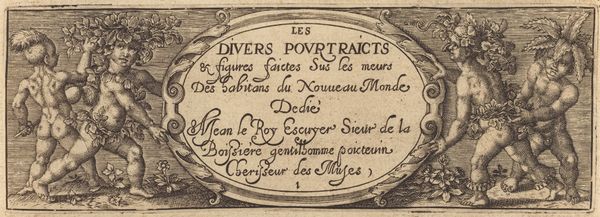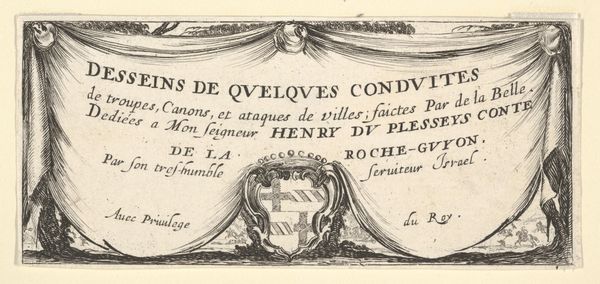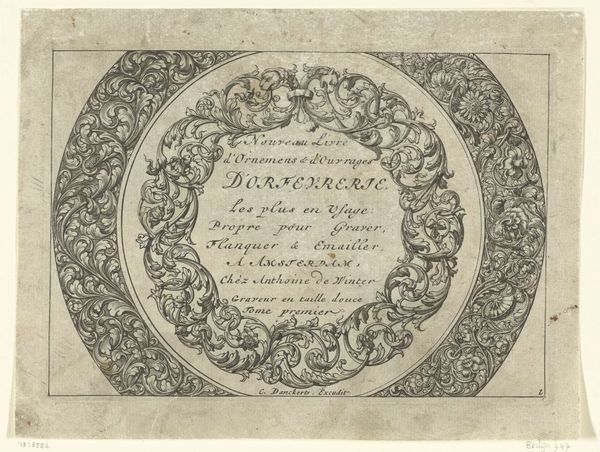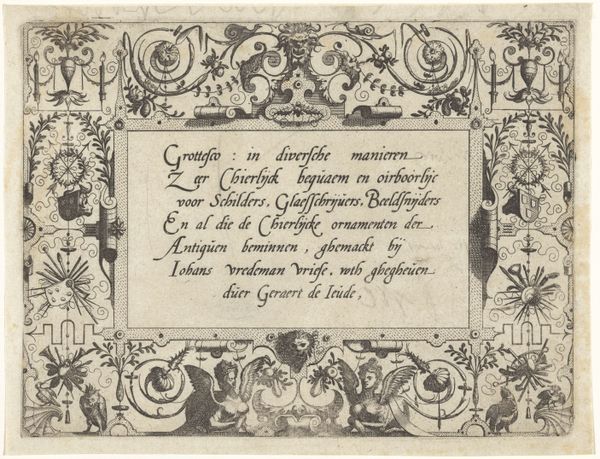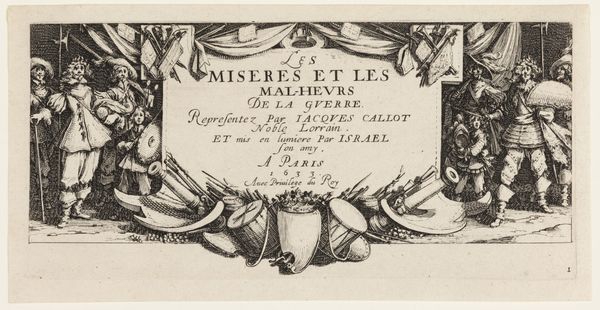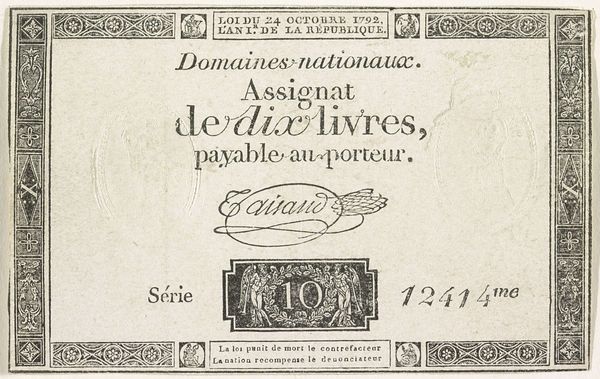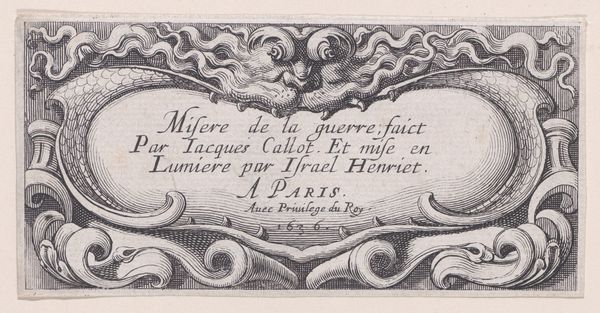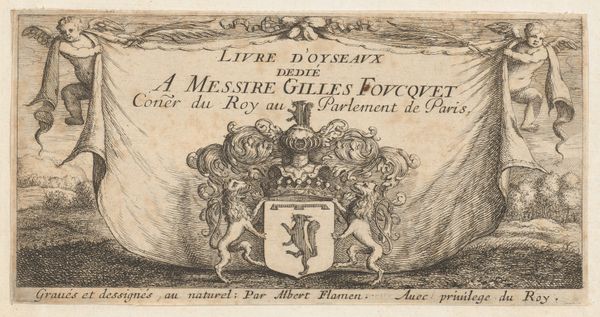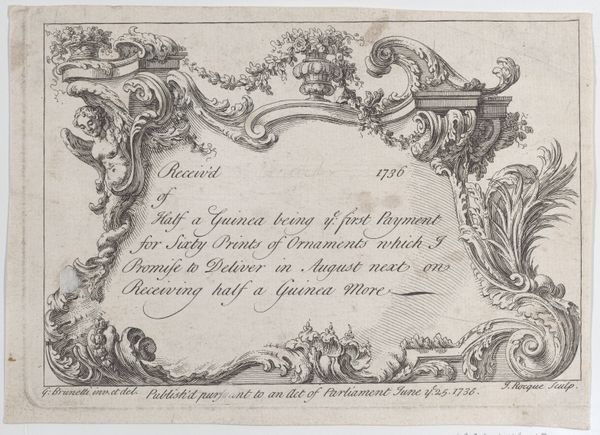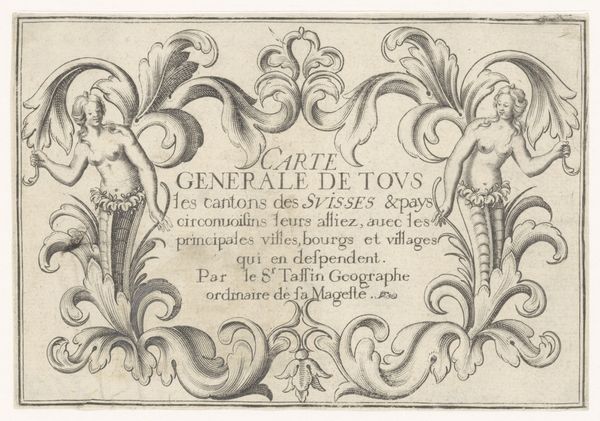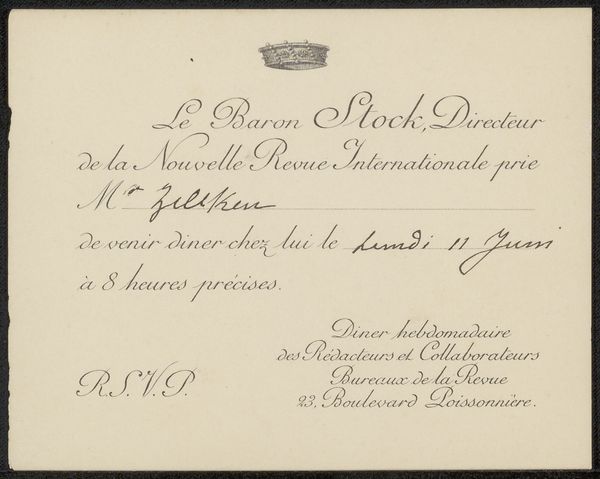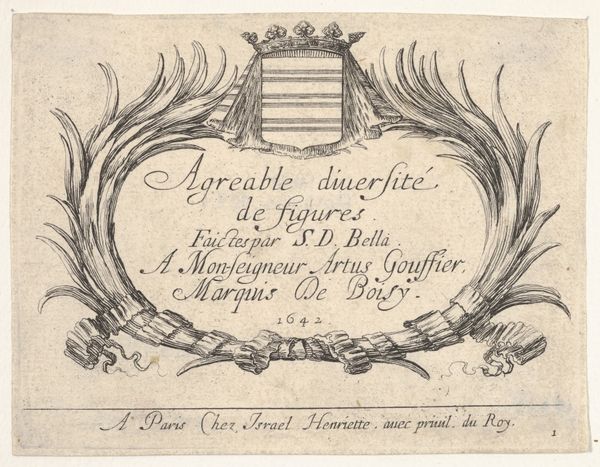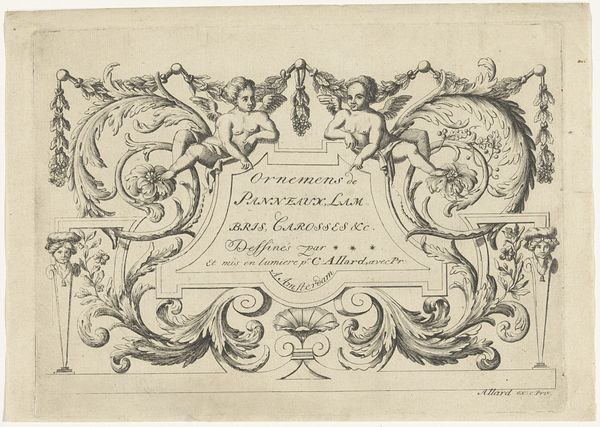
Titelprent met putti en versiering bij titel in ovale lijst 1610 - 1640
0:00
0:00
print, engraving
#
narrative-art
#
baroque
# print
#
figuration
#
engraving
Dimensions: height 46 mm, width 132 mm
Copyright: Rijks Museum: Open Domain
Curator: Here in Gallery 16, we have a rather intriguing engraving from the early 17th century. It is called "Titelprent met putti en versiering bij titel in ovale lijst," placing it within the period of 1610 and 1640. The artist is Antoine Jacquard. Editor: It feels so busy, almost chaotic with the details! I see these putti, almost like they're peeking around this ornate frame… there’s a strong sense of performance, like a stage set. What's the text about? Curator: The inscription within the oval discusses various portraits and figures "made above the mores of the inhabitants of the New World" and it is dedicated to a benefactor, noblemen named Meon le Roy. The print functions as a title page. Think of it as setting the tone, visually and textually, for the contents within. The Rijksmuseum holds this example of narrative art done in the baroque style, and its public role involves questions concerning how images such as these are consumed, as well as the cultural institution’s commitment to decolonization of art. Editor: Ah, "New World." The way those terms are bandied about… it immediately conjures up images of colonization and its impact. The putti become unsettling – almost like propaganda tools framing a skewed view. What "mores" are being depicted, and who decides what is portrayed and how? The artistic style doesn't negate the oppressive context of such visual production. Curator: Absolutely, these are crucial questions. The artist, most likely unfamiliar with indigenous peoples firsthand, draws from earlier tropes. Remember that prints circulated widely and influenced public perception, but without deep knowledge and nuance. We must consider the biases inherent in such representations and how these images have contributed to historical power dynamics. Editor: Precisely! A seemingly innocent title page reveals layers of problematic representation, a stark reminder of the necessity for critical analysis of colonial-era art and its legacy. I find the curators' awareness so important when approaching these kinds of images. Curator: I am glad you appreciate our approach to situating artworks in intersectional historical narratives, making apparent how even small prints are never simply aesthetic objects.
Comments
No comments
Be the first to comment and join the conversation on the ultimate creative platform.
